
How to Use Step Down LM2596 5V/3A: Examples, Pinouts, and Specs
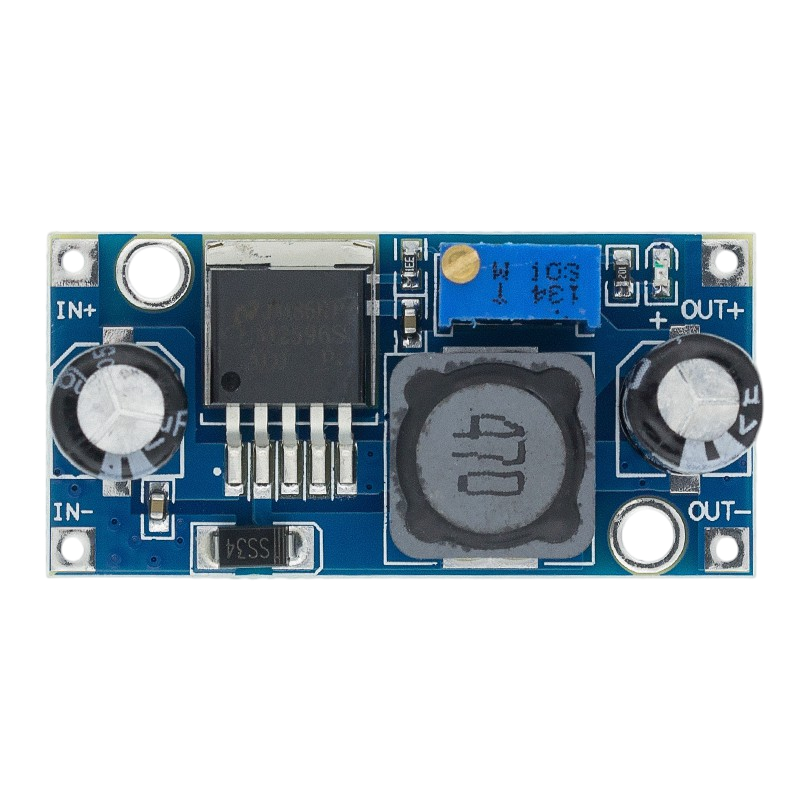
 Design with Step Down LM2596 5V/3A in Cirkit Designer
Design with Step Down LM2596 5V/3A in Cirkit DesignerIntroduction
The LM2596 5V/3A is a DC-DC buck converter designed to step down a higher input voltage to a stable 5V output. It is highly efficient, compact, and capable of delivering up to 3A of current, making it ideal for powering devices that require a reliable 5V supply. This module is widely used in battery-powered systems, embedded projects, and applications where regulated 5V power is essential.
Explore Projects Built with Step Down LM2596 5V/3A
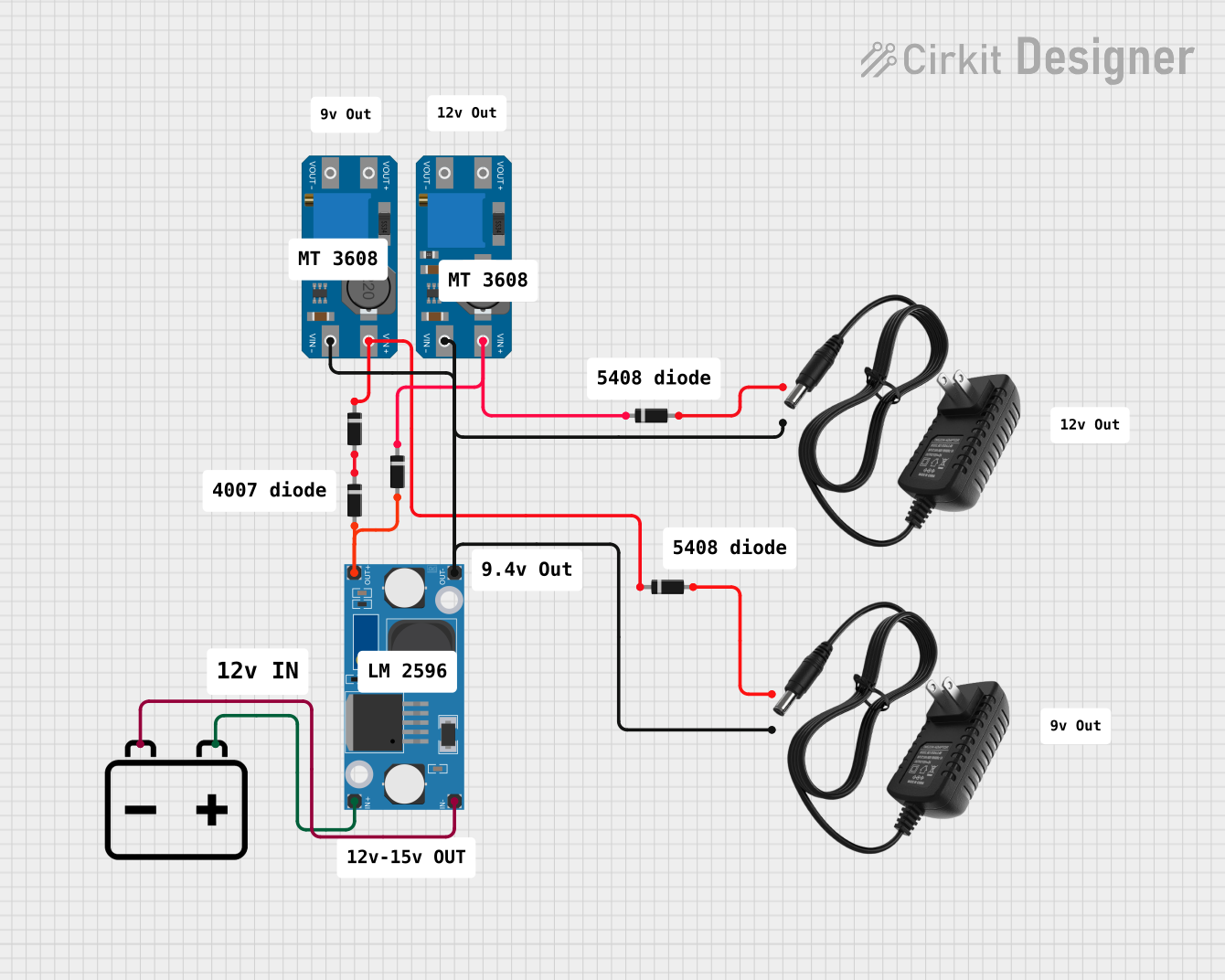
 Open Project in Cirkit Designer
Open Project in Cirkit Designer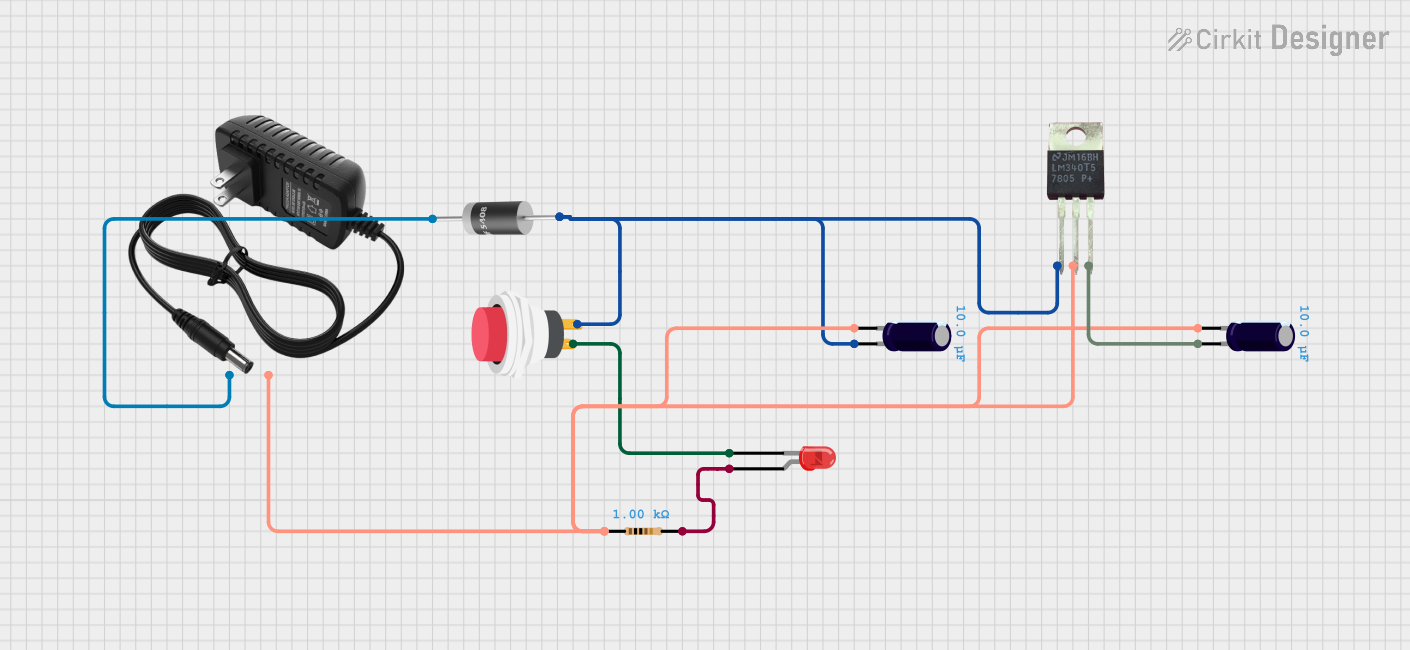
 Open Project in Cirkit Designer
Open Project in Cirkit Designer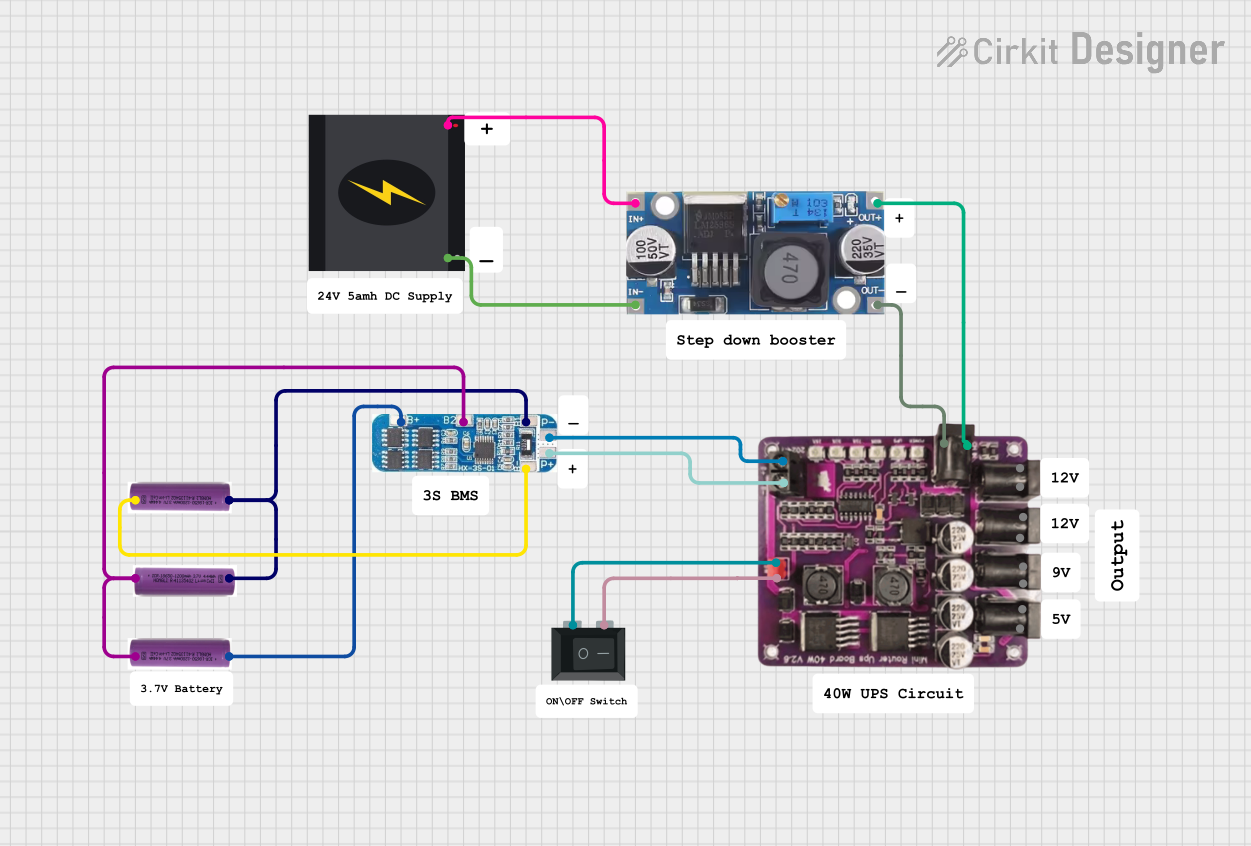
 Open Project in Cirkit Designer
Open Project in Cirkit Designer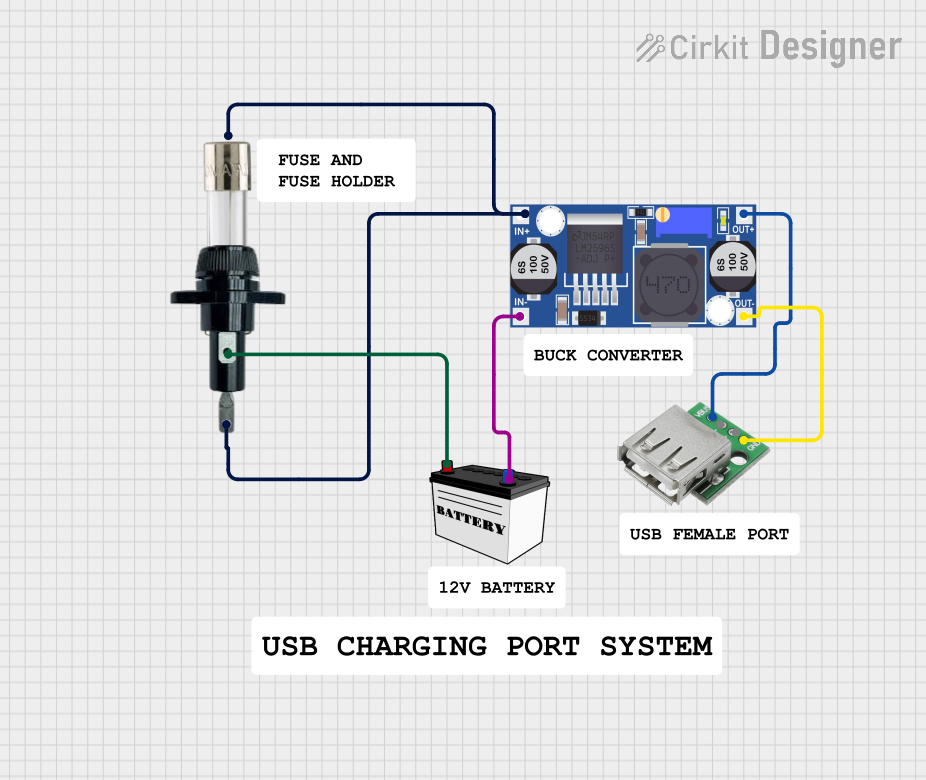
 Open Project in Cirkit Designer
Open Project in Cirkit DesignerExplore Projects Built with Step Down LM2596 5V/3A

 Open Project in Cirkit Designer
Open Project in Cirkit Designer
 Open Project in Cirkit Designer
Open Project in Cirkit Designer
 Open Project in Cirkit Designer
Open Project in Cirkit Designer
 Open Project in Cirkit Designer
Open Project in Cirkit DesignerCommon Applications
- Powering microcontrollers (e.g., Arduino, Raspberry Pi)
- Battery-powered devices
- Robotics and IoT projects
- LED strips and displays
- USB-powered devices
Technical Specifications
The LM2596 5V/3A module has the following key specifications:
| Parameter | Value |
|---|---|
| Input Voltage Range | 7V to 40V |
| Output Voltage | 5V (fixed) |
| Maximum Output Current | 3A |
| Efficiency | Up to 92% |
| Switching Frequency | 150 kHz |
| Operating Temperature | -40°C to +85°C |
| Dimensions | Approx. 45mm x 20mm x 14mm |
Pin Configuration and Descriptions
The LM2596 module typically has three pins or terminals for connection:
| Pin Name | Description |
|---|---|
| VIN | Input voltage (7V to 40V). Connect to the power source. |
| GND | Ground. Common ground for input and output. |
| VOUT | Regulated 5V output. Connect to the load. |
Usage Instructions
How to Use the LM2596 5V/3A in a Circuit
Connect the Input Voltage (VIN):
- Attach the positive terminal of your power source (7V to 40V) to the VIN pin.
- Connect the negative terminal of the power source to the GND pin.
Connect the Output Load (VOUT):
- Connect the positive terminal of your load (e.g., microcontroller, LED strip) to the VOUT pin.
- Connect the negative terminal of your load to the GND pin.
Verify Connections:
- Double-check all connections to ensure proper polarity and avoid short circuits.
Power On:
- Turn on the power source. The module will regulate the input voltage and provide a stable 5V output.
Important Considerations and Best Practices
- Input Voltage Range: Ensure the input voltage is within the specified range (7V to 40V). Exceeding this range may damage the module.
- Heat Dissipation: At higher currents (close to 3A), the module may heat up. Use a heatsink or ensure proper ventilation to prevent overheating.
- Load Current: Do not exceed the maximum output current of 3A to avoid damaging the module.
- Polarity Protection: The module does not have built-in reverse polarity protection. Ensure correct polarity when connecting the power source.
Example: Using LM2596 with Arduino UNO
The LM2596 can be used to power an Arduino UNO by stepping down a 12V input to 5V. Below is an example circuit and Arduino code:
Circuit Connections
- Connect a 12V DC power source to the VIN and GND pins of the LM2596.
- Connect the VOUT pin of the LM2596 to the 5V pin of the Arduino UNO.
- Connect the GND pin of the LM2596 to the GND pin of the Arduino UNO.
Arduino Code Example
// Example code to blink an LED connected to pin 13 of Arduino UNO
// Ensure the Arduino is powered via the LM2596 module
void setup() {
pinMode(13, OUTPUT); // Set pin 13 as an output
}
void loop() {
digitalWrite(13, HIGH); // Turn the LED on
delay(1000); // Wait for 1 second
digitalWrite(13, LOW); // Turn the LED off
delay(1000); // Wait for 1 second
}
Troubleshooting and FAQs
Common Issues and Solutions
No Output Voltage:
- Cause: Incorrect input voltage or loose connections.
- Solution: Verify that the input voltage is within the 7V to 40V range and check all connections.
Overheating:
- Cause: High current draw or insufficient ventilation.
- Solution: Reduce the load current or add a heatsink to the module.
Output Voltage Fluctuations:
- Cause: Input voltage instability or excessive load.
- Solution: Use a stable power source and ensure the load does not exceed 3A.
Module Not Working After Connection:
- Cause: Reverse polarity or input voltage exceeding the maximum limit.
- Solution: Check polarity and ensure the input voltage is within the specified range.
FAQs
Q1: Can I adjust the output voltage of the LM2596 module?
A1: No, this version of the LM2596 module has a fixed 5V output. For adjustable output, use an LM2596 adjustable module.
Q2: Can I use the LM2596 to power a Raspberry Pi?
A2: Yes, the LM2596 can power a Raspberry Pi, but ensure the input voltage is sufficient and the current draw does not exceed 3A.
Q3: Is the LM2596 suitable for battery-powered applications?
A3: Yes, the LM2596 is highly efficient and suitable for stepping down battery voltage to 5V.
Q4: Does the module have short-circuit protection?
A4: No, the LM2596 module does not have built-in short-circuit protection. Use external protection if needed.